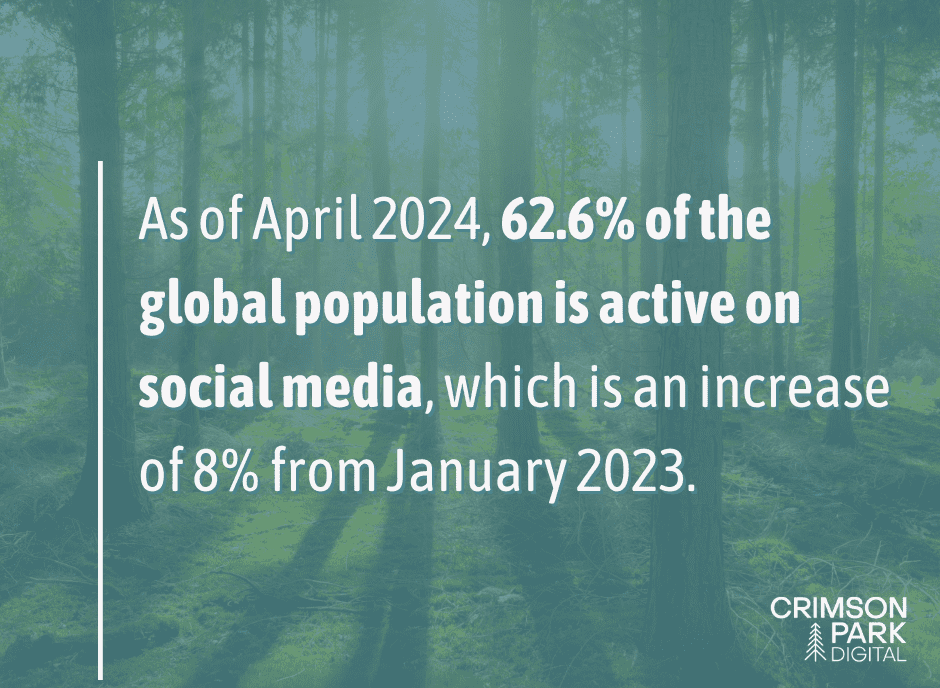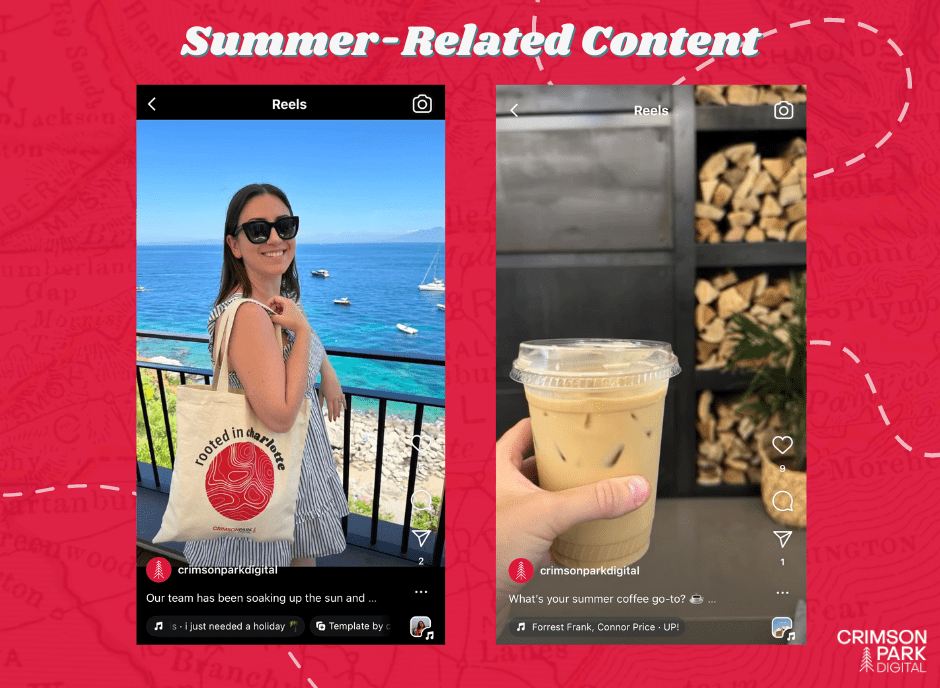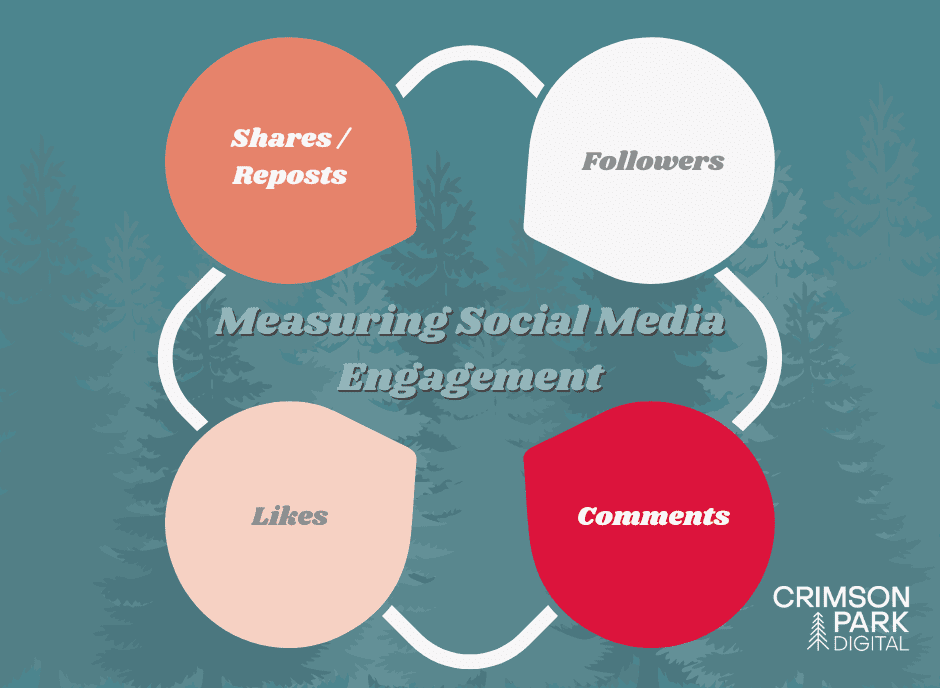The Influence of Seasonal Trends on Social Engagement
Seasonal trends have a massive influence on how active users are on social media, affecting how well your posts perform. For example, analytics show that content around fall and winter may perform better as they are geared towards specific trends such as back-to-school, football season, pumpkin spice, Halloween, and the holidays. Users are often more engaged and active during these periods as well. Whereas, summer and spring users are typically less active. Curious to learn how to tap into digital marketing strategies to increase your overall presence and engagement? Let’s get into it!

Social Media Engagement Trends by Season
Spring Online Engagement
After the quiet cold of winter, spring brings a revitalized essence and engagement across social media platforms. Everyone is eager to shake off the winter blues and become inspired, making it an opportune time for brands to capture attention. Vacation and travel-related posts ignite a lot of interest and inspiration during this time. Additionally, seasonal events like spring sales and Earth Day not only align with sustainability and environmental consciousness, which is great messaging to align with, but they also spark increased interaction and participation. Brands can capitalize on these themes by crafting content that resonates with the spirit of rejuvenation and enjoying the great outdoors.
Summer Online Engagement
Tapping into the season of vacation mode, social media engagement tends to stagnate as audiences prioritize outdoor activities and travel over scrolling. To combat the slower season, brands must prepare and adjust their content strategies. Brands should create content that is fun, carefree, travel-oriented, or focused on summer activities such as barbeques and the beach. By understanding the seasonal shift in user behavior, brands can stay relevant and engage their audiences with compelling content.

Fall Online Engagement
The arrival of fall marks a period of transition and exciting anticipation. As students return to school and routines, there’s a notable spike in online activity. We recommend leveraging this stimulating time by incorporating back-to-school themes and autumn-inspired content into digital marketing strategies. With the nostalgia and excitement associated with fall traditions like apple picking and Halloween, brands can foster deeper connections with their audience while driving engagement.
Winter Online Engagement
Winter brings a festive atmosphere that significantly impacts social media engagement patterns. Holidays like Thanksgiving, Christmas, and New Year’s Eve have a heightened sense of celebration and cheer online. An effective strategy to capitalize on this would include creating content that reflects the festive spirit, whether through holiday-themed posts, gift guides, heartwarming case studies, or charitable highlights. Promoting the sentiments of joy and togetherness that define the season can help enhance engagement and cultivate a sense of community among followers.
Leveraging Social Media Platforms Year-round
Understanding the dynamics of different social media platforms is crucial for maximizing engagement and effectively reaching your target audience. Each platform also has its unique features, user demographics, and engagement patterns that influence how content performs throughout the year.
Platform-Specific Trends
Instagram Seasonality
Known for visual content, Instagram thrives on high-quality images and videos. During different seasons, such as summer, content that features outdoor activities or vibrant summer themes tends to perform well. Instagram stories and reels are also popular formats for engaging with audiences in real-time.
Facebook Seasonality
As a versatile platform, Facebook caters to various demographics and interests. It’s effective for building communities, sharing longer-form content, and promoting events. Seasonal engagement on Facebook typically focuses on holiday promotions, seasonal product launches, and fun interactive posts that encourage user participation.
LinkedIn Seasonality
Industry insights and thought leadership content are ideal for B2B marketing. Seasonal LinkedIn trends may include career-related topics, industry trends, and professional development themes.
Best Practices for Adapting Content for Each Platform Based on Seasonal Trends
- Tailor your content marketing strategy to fit the platform’s strengths and user preferences.
- Incorporate seasonal themes and trends into your content calendar, ensuring each post aligns with the specific platform.
- Use platform-specific features such as Instagram stories or LinkedIn polls to further engage your audience.
- Regularly monitor analytics to understand which types of content perform best on each platform during different seasons.
Leveraging Data and Analytics for Social Media Engagement
Monitoring key social media engagement metrics throughout the year provides valuable insights into how your content resonates with your audience and performs over the seasons. Key metrics to monitor include:
- Likes, Shares, and Comments: These metrics indicate how well your audience receives your content.
- Click-through Rates (CTR): CTR measures the percentage of users who clicked on a link or CTA in your posts, indicating how compelling your content is in driving action.
- Reach and Impressions: These metrics show the number of unique users who have seen your content.

Analyzing Seasonal Social Media Trends in Engagement Data
- Comparative Analysis: Compare engagement metrics across different seasons or months to identify patterns and trends. Look for spikes or dips in engagement and correlate them with specific content themes or seasonal events.
- Heatmaps: Use heatmaps to visualize engagement trends on landing pages over time. Identify peak engagement periods and adjust your content strategy accordingly.
- Sentiment Analysis: Analyze audience sentiment through comments and feedback to gauge the emotional response to your content.
Adapting Social Media Strategies For Every Season
Creating a Year-Round Social Media Content Calendar
A well-planned social media content calendar helps strategize and schedule content based on seasonal variations and trends. Incorporate seasonal themes, holidays, and events into your content calendar and plan ahead for significant holidays, industry-specific events, and trending topics relevant to your audience. Diversifying your content format, such as blogs, polls, reels, etc., also helps cater to different preferences and platforms. Tailor content to align with seasonal interests and activities that resonate with your social audiences. Lastly, make sure to maintain a consistent posting schedule. Balance evergreen content with newsworthy updates and seasonal content.
Importance of Flexibility in Social Media Strategies
Flexibility is key to successful social media strategies as it allows you to respond to changing trends and audience preferences. To create the best content marketing calendars, ensure you are monitoring real-time conversations and trending social media topics to capitalize on any current opportunities. Stay alert and active in adjusting content, the best marketing strategies leverage current events and user feedback to enhance the overall campaign. By leveraging data-driven insights and maintaining a flexible approach to content planning and marketing strategy, you can effectively navigate seasonal variations in social media engagement. This proactive approach not only enhances engagement metrics, but also strengthens brand credibility, fosters audience relationships, and drives growth. Curious how you could bolster your content marketing strategy to align with seasonal shifts, we’re here to help—request a consultation today!


